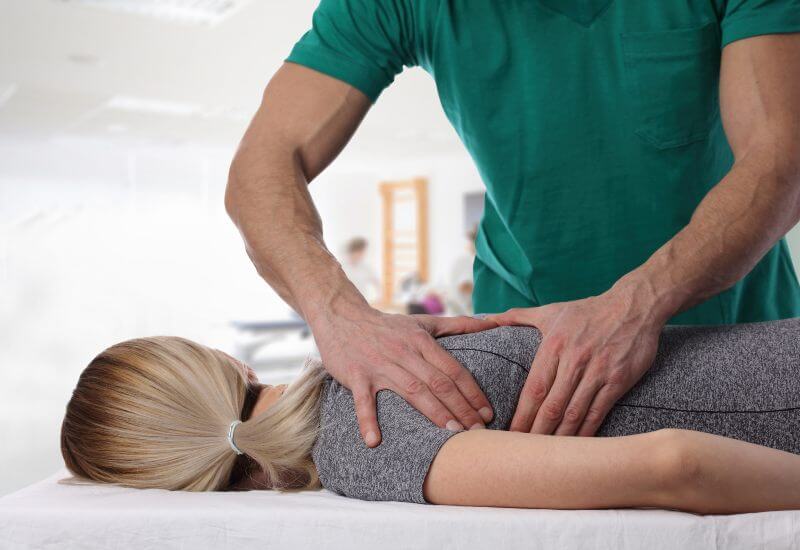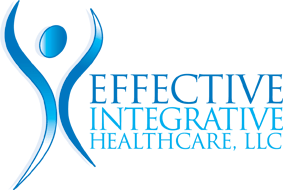Benefits of Massage After a Sports Injury

If you’ve ever suffered a sports injury, you know how frustrating and painful it can be. But did you know that massage can actually help you recover more quickly? Here are 7 benefits of massage therapy after a sports injury.
The Popularity of Massage Therapy for Sports Injuries
When it comes to treating sports injuries, massage is becoming increasingly popular. The National Institute of Health reports that massage therapy is a popular choice for athletes looking to improve their performance or recover from an injury. Sports massage has been shown to be beneficial in preparing athletes for competition, aiding in recovery after exercise or competition, and treating sports-related musculoskeletal injuries.
If you’re an athlete looking for an edge on your competition or simply wanting to speed up your recovery time, consider adding massage therapy to your training regimen.
Boosts Recovery Time
Sports injuries are a common occurrence, and massage therapy can be a great way to speed up the recovery process. Massage therapy can help to increase blood flow and reduce inflammation, both of which are important for healing. In addition, massage can help to reduce pain and improve range of motion.
The great thing about massage is that it can be tailored to each individual. For example, if you have a muscle strain, your massage therapist can focus on areas that are particularly tight or painful. This means that you can get the most out of your treatment and feel better faster.
Massage helps to increase blood flow and circulation, which delivers oxygen and nutrients to the muscles. This hastens the repair process and allows the body to heal more quickly.
Massage therapy also helps to relieve pain and muscle tension, which can make the recovery process much more comfortable.
Prevents Future Injuries
When it comes to preventing future injuries, massage therapy is often overlooked. But the truth is, regular massage can be hugely beneficial in keeping your body healthy and injury-free.
With regular massage, your muscles will become more relaxed and pliable, allowing for increased flexibility and range of motion. This is especially important as we age when our muscles tend to get tighter and less responsive.
Good circulation is essential for keeping your muscles and tissues healthy. Massage therapy helps to increase circulation by promoting the flow of blood and lymph throughout the body. This improved circulation helps to deliver nutrients and oxygen to the muscles, which in turn helps to prevent injuries.
Massage therapy can help to boost your immune system by stimulating the production of white blood cells. White blood cells are the body’s first line of defense against infection, so this is a crucial part of preventing future injuries.
If you do happen to sustain an injury, massage therapy can help to promote healing by reducing inflammation and increasing blood flow to the area. This means that you’ll heal more quickly and with less scarring.
Reduces Psychological Tension and Stress
The physical benefits of massage are well-known, but it can also help to reduce the psychological tension and stress that often accompany an injury. The relaxation and release that come with massage can help to speed up the healing process. Chronic stress can have a negative impact on your overall health, and it can also contribute to muscle tension and inflammation. Massage therapy can help to reduce stress levels, which in turn will help to reduce the risk of future injuries.
Reduces Pain and Inflammation
There are many different types of massage, but all share the same goal of easing muscle tension and promoting relaxation. Massage therapists use their hands, elbows, and forearms to knead muscles and soft tissue. This manipulation can help relieve pain by loosening knots and trigger points.
Massage increases blood flow and helps reduce inflammation. When muscles are tense, they constrict blood vessels. This can lead to inflammation and pain. Massage can help to break up the scar tissue that forms after an injury, which can lead to reduced pain and improved range of motion.
There is a wide body of research supporting the benefits of massage therapy for pain relief. A systematic review of 26 studies found that massage is an effective treatment for reducing pain and improving function in people with various conditions, including osteoarthritis, fibromyalgia, and chronic low back pain.
While more research is needed to understand the exact mechanisms behind how massage works to reduce pain, it’s clear that this ancient healing practice can be an effective part of your pain management plan. If you’re looking for a natural way to relieve pain and inflammation, consider adding massage therapy to your routine.
Promotes Blood Circulation
As mentioned before, one of the main benefits of massage is increased blood circulation. This helps to carry oxygen and nutrients to the muscles, which aids in the healing process. Your blood circulates throughout your body, delivering oxygen and nutrients to all your cells. When your blood circulation is impaired, it can lead to pain and inflammation. Massage therapy can help promote blood circulation, which can in turn reduce pain and inflammation.
Increases Mobility and Flexibility
When you receive a massage, the therapist can break up any adhesions or scar tissue that may be present. This can help to improve range of motion and flexibility.
Massage therapy also helps to lengthen and relax muscles. By lengthening and relaxing the muscles, massage therapy can help to improve flexibility. Further, by increasing circulation and breaking up adhesions, massage therapy can help to increase range of motion. This can be especially helpful for those who are dealing with an injury or limited mobility.
Improves Muscular Strength
There’s no doubt that massage can be beneficial for your health. But did you know that it can also help improve your strength? That’s right! Regular massage can help to increase your muscle strength, making you better able to withstand physical activity. Better blood circulation, the release of toxins, and improved range of motion all contribute to stronger muscles.
Improves Sleep Quality
Massage therapy can help to improve sleep quality by relieving the tension and stress that often accompany an injury. A good night’s sleep is essential for the body to heal properly, so this is yet another way in which massage can aid in the recovery process.
Different Types of Massage Therapy
There are many different types of massage therapy, and each has its own benefits. Whether you’re looking to relax or to relieve pain, there’s a type of massage for you:
- Swedish massage. One of the most popular types of massage. It involves long, flowing strokes to help relax the body. This type of massage is often used as a relaxing, full-body massage.
- Deep tissue massage. Involves more intense pressure and can be helpful in relieving pain and tension in the muscles.
- Hot stone massage. Type of massage that uses heated stones to relax the muscles. The heat can be both soothing and therapeutic.
- Trigger point massage. Focuses on specific areas of the body that are causing pain. This type of massage can be helpful in relieving headaches, back pain, and neck pain.
- Sports massage. Designed to help athletes recover from injuries and improve their performance. Sports massage can be used before, during, or after athletic events.
- Pregnancy massage. This massage is specifically designed for pregnant women. Pregnancy massage can help to relieve some of the discomforts associated with pregnancy, such as back pain and swelling.
- Reflexology. Massage that applies pressure to specific points on the hands and feet. Reflexology is said to be helpful in promoting relaxation and improving circulation.
- Shiatsu. Uses pressure and finger strokes on the body. Shiatsu is said to be helpful in relieving pain, tension, and fatigue.
How Soon After a Sports Injury Can You Start Massage Therapy?
After a sports injury, many people turn to massage therapy as a way to help speed up the healing process. However, there is no one-size-fits-all answer when it comes to incorporating massage therapy into your recovery plan. Here are a few things to consider when deciding whether massage therapy is right for you:
- The type of injury you have.
- The severity of the injury.
- Your pain tolerance.
- Your overall health and fitness level.
- The advice of your doctor or other healthcare provider.
If you have a milder injury, such as a muscle strain, massage therapy may be helpful in reducing inflammation and promoting blood flow to the area, which can speed up healing. For more serious injuries, such as a fracture or ligament tear, massage therapy may not be recommended until the initial swelling has gone down and the risk of further injury is low.
If you’re unsure whether massage therapy is right for you, always consult with your doctor or other healthcare provider before beginning any new treatment.
Enlist the Help of Massage Therapy Services Today!
Whether you’re dealing with a recent injury or trying to prevent one in the future, massage therapy can be a helpful tool. So don’t hesitate to add it to your recovery routine! Contact Effective Integrated Healthcare in Maryland today to schedule a massage therapy appointment today!
